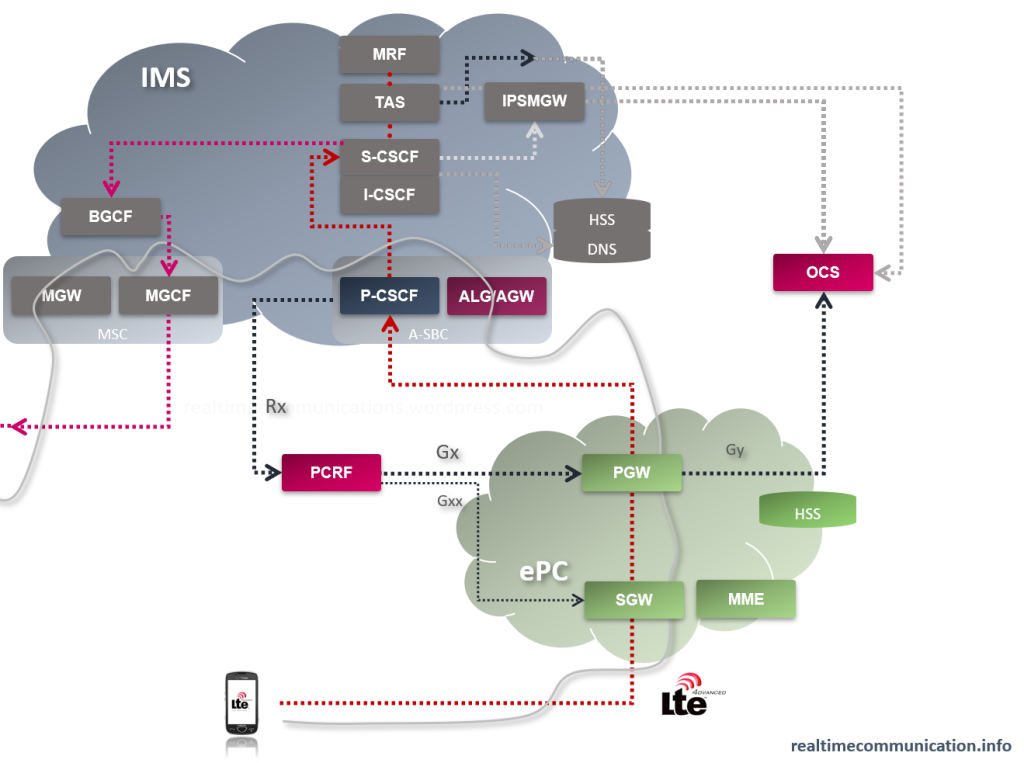Rx interface is often overlooked in IMS training, yet from the network core standpoint it is the most important one. It makes possible for IMS to allocate the data resources required for a media session.

As we discussed in VoLTE Policy Control, the Rx Reference point is defined between P-CSCF (referred in spec as AF) and PCRF (the PCC architecture is defined in 3GPP 23.203 and 29.212). Via this interface the P-CSCF provides session information to the PCRF. The PCRF then informs the P-CSCF of traffic plane events. It can also verify that the service information provided by the P-CSCF is consistent with the operator defined policy rules. The service information is used to derive the QoS for the media service.
The PCRF can also reject the request received from the P-CSCF. In that case the PCRF indicates the result in the answer and provides to P-CSCF the service information that can be accepted.
